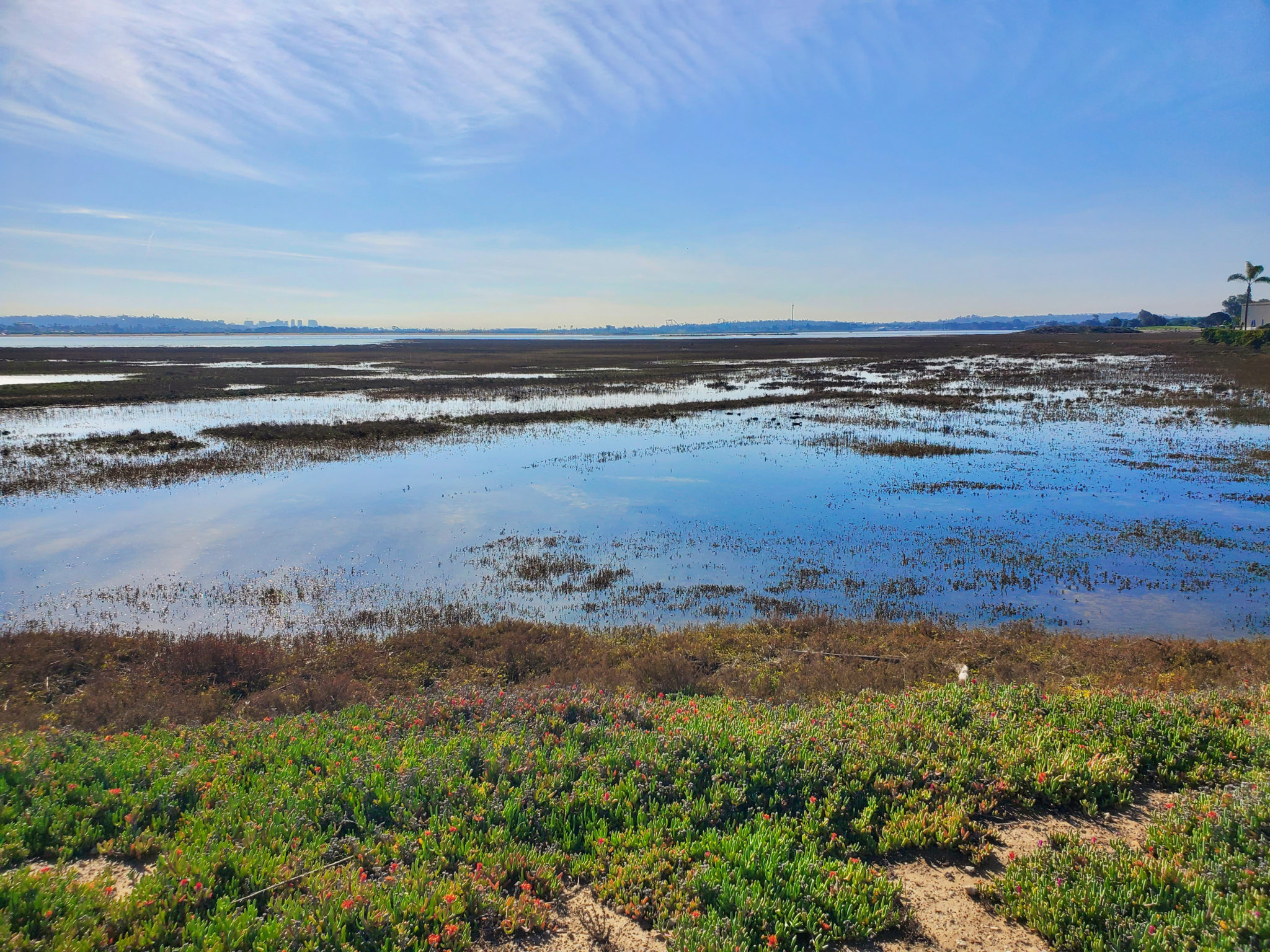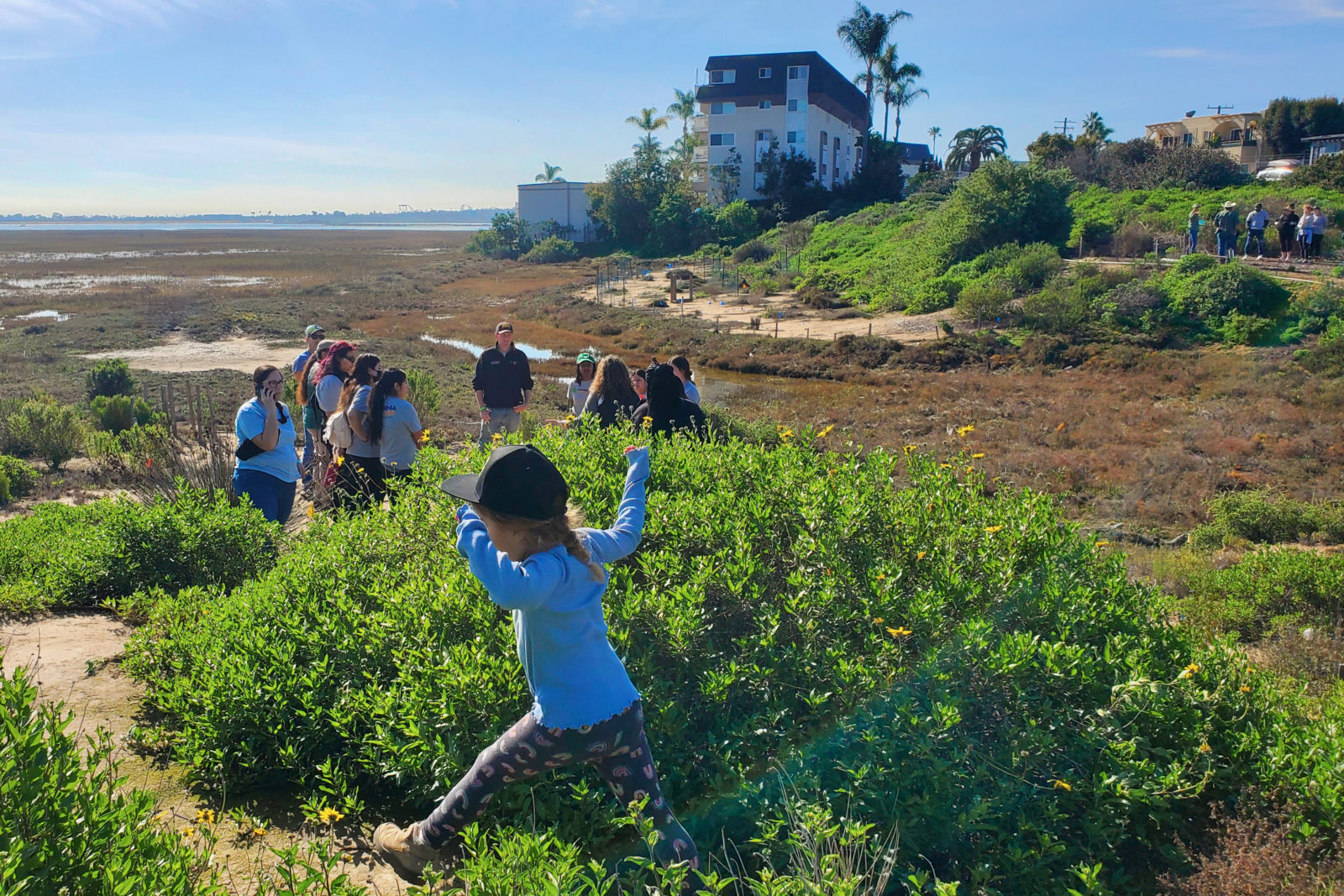As we head into the end of February, we once again wanted to offer a belated thanks to the hundreds of attendees, neighbors, supporters, elected officials, media outlets and community partners who joined ReWild Mission Bay for this year’s Love Your Wetlands Day. Thank you!
We were particularly pleased to hear San Diego City Councilmember Joe LaCava not only voice his support for wetland restoration in Mission Bay during his remarks, but specifically voice his support for the Wildest proposal. That’s good news, and a big deal, especially as the city’s draft EIR (environmental impact report) for their De Anza Natural wetland restoration plan is about to be released.
Our “Wildest” dreams are to restore 220 acres of wetland now, so some of this threatened habitat will remain above the waterline as sea levels rise over the next several decades. With current projections, that comes out to about 80 acres remaining by about 2100 – the same amount of wetland called for in the city’s 1994 Mission Bay Park Master Plan Update that identified the northeast corner of Mission Bay as vital for habitat restoration. That’s why it’s so urgent we begin work now.
As part of the city’s forthcoming draft EIR document of their De Anza Natural proposal, we expect to see science that demonstrates:
- Projected sea level rise modeling in northeast Mission Bay.
- How sea level rise in Mission Bay will affect existing public assets, and how restored wetlands will offer shoreline resiliency.
- Water quality improvements with increased wetland restoration.
- Cost-benefit analysis to the city on natural carbon sequestration.
- How sea level rise will alter habitats for threatened and endangered species like Ridgway’s rails that are barely able to sustain a toehold in current conditions.
- Hydrologic modeling detailing how restored wetlands will better cleanse and flush seawater at De Anza Cove.
- What maintenance will be required to keep planned shorelines, beaches, and recreational areas in place and functioning, and what will be the environmental impact and cost of that maintenance as sea level rise progresses.
We also expect the city’s draft EIR to demonstrate how wetland restoration will improve and clarify land use and recreation at Mission Bay Park, with opportunities for future generations to paddleboard, kayak, or walk through a resilient, restored marsh in a manner we can’t right now.
With our Wildest proposal, ReWild Mission Bay has demonstrated the city has an exceptional opportunity to restore and improve Mission Bay Park into a world-class, one-of-a-kind ecological, educational, and recreational asset in conjunction with UCSD and our Native American partners, and with the support and involvement of ReWild Coalition members that are ready to work with the city to bring about this human and habitat restoration.
We can’t think of a better opportunity or legacy. And we have a tangible plan to implement that vision with Wildest. We believe the city, in a good faith EIR study of their own restoration plan, will come to those same conclusions on both acreage and opportunity.


